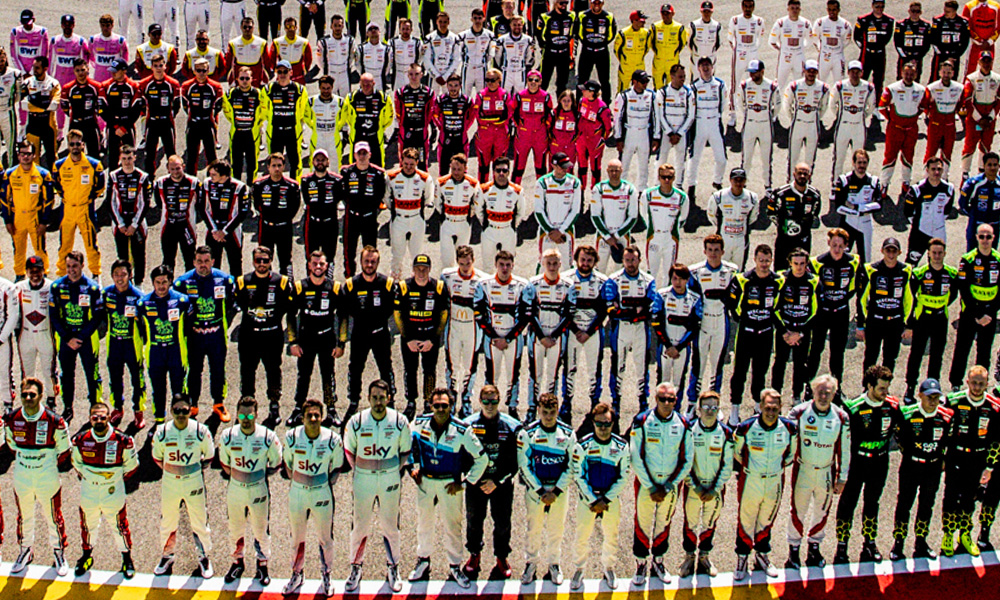
Photo: SRO
The FIA has ratified a driver ratings overhaul first proposed by GT racing promoter SRO Motorsports Group last year, establishing new criteria for the different classifications that will go into effect next year.
Drivers in series that utilize the FIA system will be put into one of four groups, as is currently the case, however the conditions determining where drivers are placed have been updated.
The rating categories will continue to be named after the precious metals Platinum, Gold, Silver and Bronze, with Platinum being the highest and Bronze the lowest.
According to SRO founder and CEO Stephane Ratel, the overhaul was proposed mainly to break up a large pool of Silver drivers covered by a wide range of racing backgrounds.
He first proposed a revised system during last October’s Fanatec GT World Challenge Europe powered by AWS Endurance Cup season finale at Circuit de Barcelona-Catalunya.
The FIA World Motor Sport Council then ratified the new structure in June and released a document detailing changes to the driver rating criteria, while Ratel provided an outline during SRO’s annual press conference on Friday.
“We had to revise the driver categorizations,” Ratel said.
“Working together with our friends the ACO, and convincing our friends of IMSA and the FIA, we have progressively achieved what we were looking for.
“We had a huge Silver grid made of young drivers. But some of these young drivers started racing at eight years old and some of them, their fathers said, ‘you graduate before you race.’
“If you start at eight or 22, you’re not going to be at the same level.
“We are cutting the Silver class in two, with all of the young drivers having a wealth of experience going to Gold, and all of the ones having a later start in their career going to Silver.”
Ratel added that the ratings overhaul addresses another issue whereby professional drivers were automatically classified as Bronze when they reached the age of 60, despite still being fast enough to suit higher levels.
“Having driven with Bernd Schneider at the Red Bull Ring [Fanatec GT2 European Series round] this year, someone like me was not at the same speed,” Ratel said.
“It has been agreed that even a Pro getting older will remain a Silver, while a Bronze who has never been a Pro will be the true Bronze.”
The Platinum tier is for “professional drivers” including those with factory contracts, while the updated Gold tier is designed to collect the fastest of today’s Silvers.
According to the FIA-published criteria, drivers who are current or past Super License holders — practice licenses included — and those with performances and achievements that are “at the Platinum driver level” will be assigned to Platinum status.
The Gold rating will be for drivers whose main professional activity is “based around driving in motorsport” and have taken part in high-level karting for three or more seasons.
It also covers drivers who have competed in “significant single-seater competitions” for more than two seasons and drivers whose motorsport career in karting or cars began under the age of 20.
Several of the Gold criteria will also be relevant to some Platinum drivers, but career achievements will help to further distinguish the two levels.
A top-five result in what the FIA-published regulations define as a ‘Tier 1’ series yields a Platinum rating and a top-five in a Tier 2 series, or a Tier 3 series title, yields Gold.
Silver drivers will be those under 30 in their first year with a racing license, drivers with “no significant single-seater or karting experience”, drivers who began their motorsport career in their 20s and drivers who “derive an income from motorsport-related activities.”
The Bronze ranking will be reserved for drivers who obtained their first racing license after the age of 30.
Specific results will cause certain drivers to be upgraded after a season.
For example, finishing on the podium of a Pro class in the major 24-hour races at Le Mans, Daytona, Spa and the Nürburgring will result in an upgrade to Platinum for the following year.
The champions of GTWC Europe, America and Asia, as well as ADAC GT Masters and the top prototype classes of the FIA World Endurance Championship and IMSA WeatherTech SportsCar Championship will be boosted to Platinum if they are not already there.
An upgrade to Gold will be earned by a Silver-rated driver who finishes in the GTWC Europe Silver Cup top three.
Post-season promotions from Bronze to Silver will be determined by quantitative data analysis.
A driver’s rating can also be determined by “additional criteria deemed worthy of consideration by the Committee”.
Series Tiering Structure At a Glance
Tier 1 – any FIA World Championship, FIA Formula 2 and GP2, Formula E before world championship status, FIA World Touring Car Championship, WTCR, ETCR, FIA International F3000, V8 Supercars, NTT IndyCar Series.
Tier 2 – NASCAR Cup Series, DTM, Super GT, Porsche Mobil 1 Supercup, international single-seater series including FIA Formula 3, FIA World Cups excluding Nations Cup and Motorsport Games, Super Formula.
Tier 3 – Regional and national touring car championships, Porsche Carrera Cup regional and national, regional or national LMP3, regional or national GT4, NASCAR Xfinity and trucks, FIA European Hill Climb Championship, international and European karting championships

























